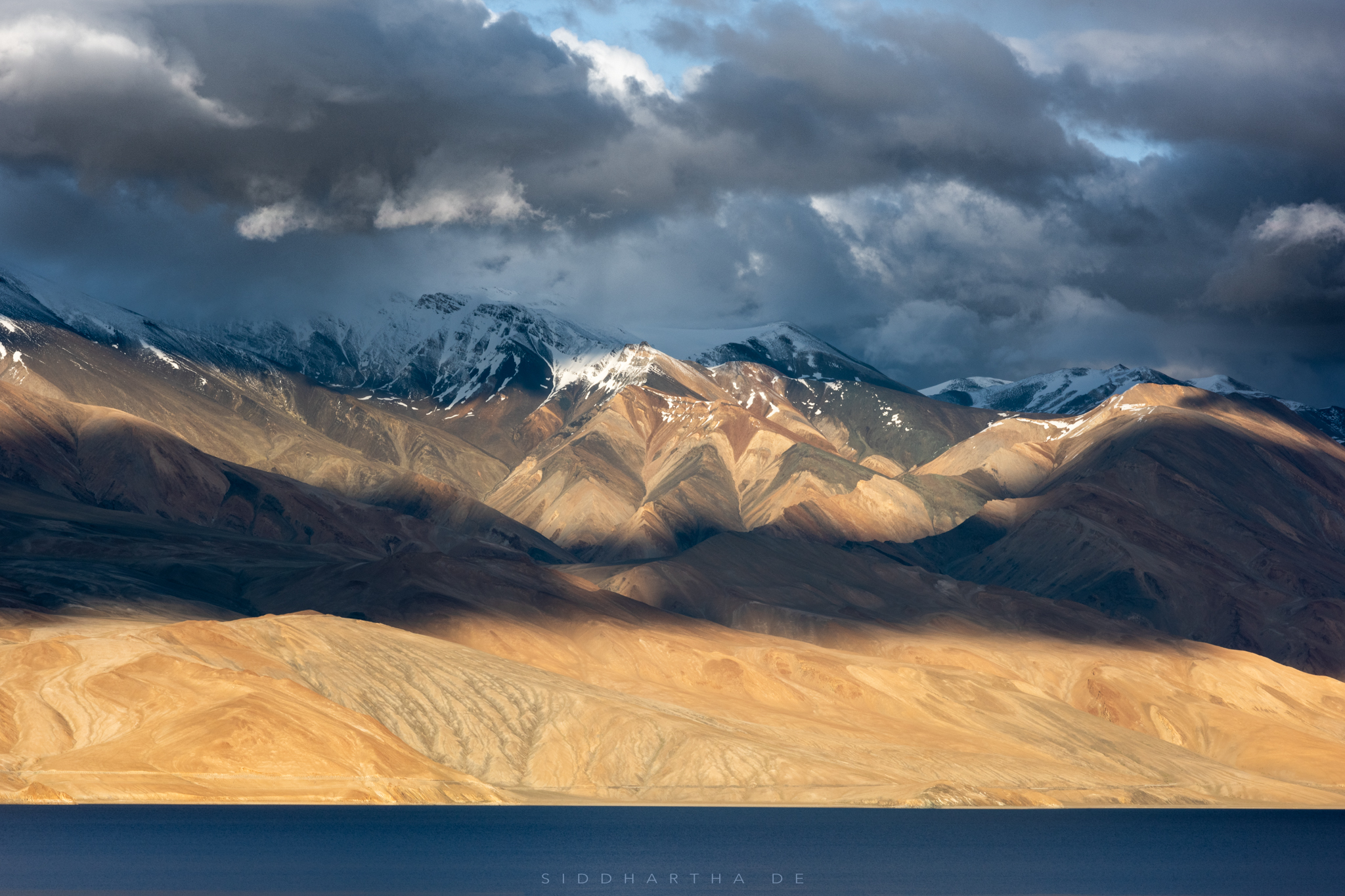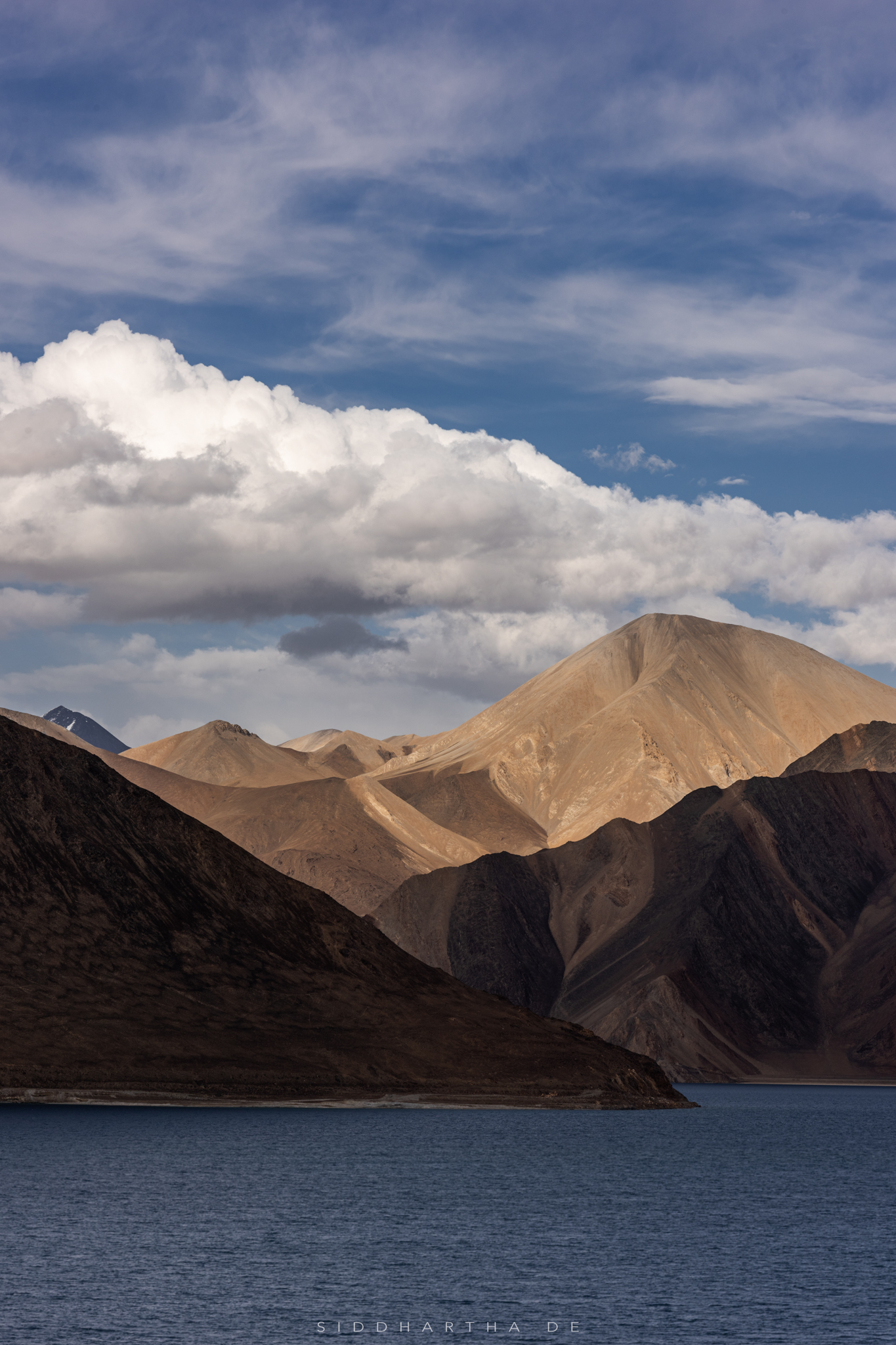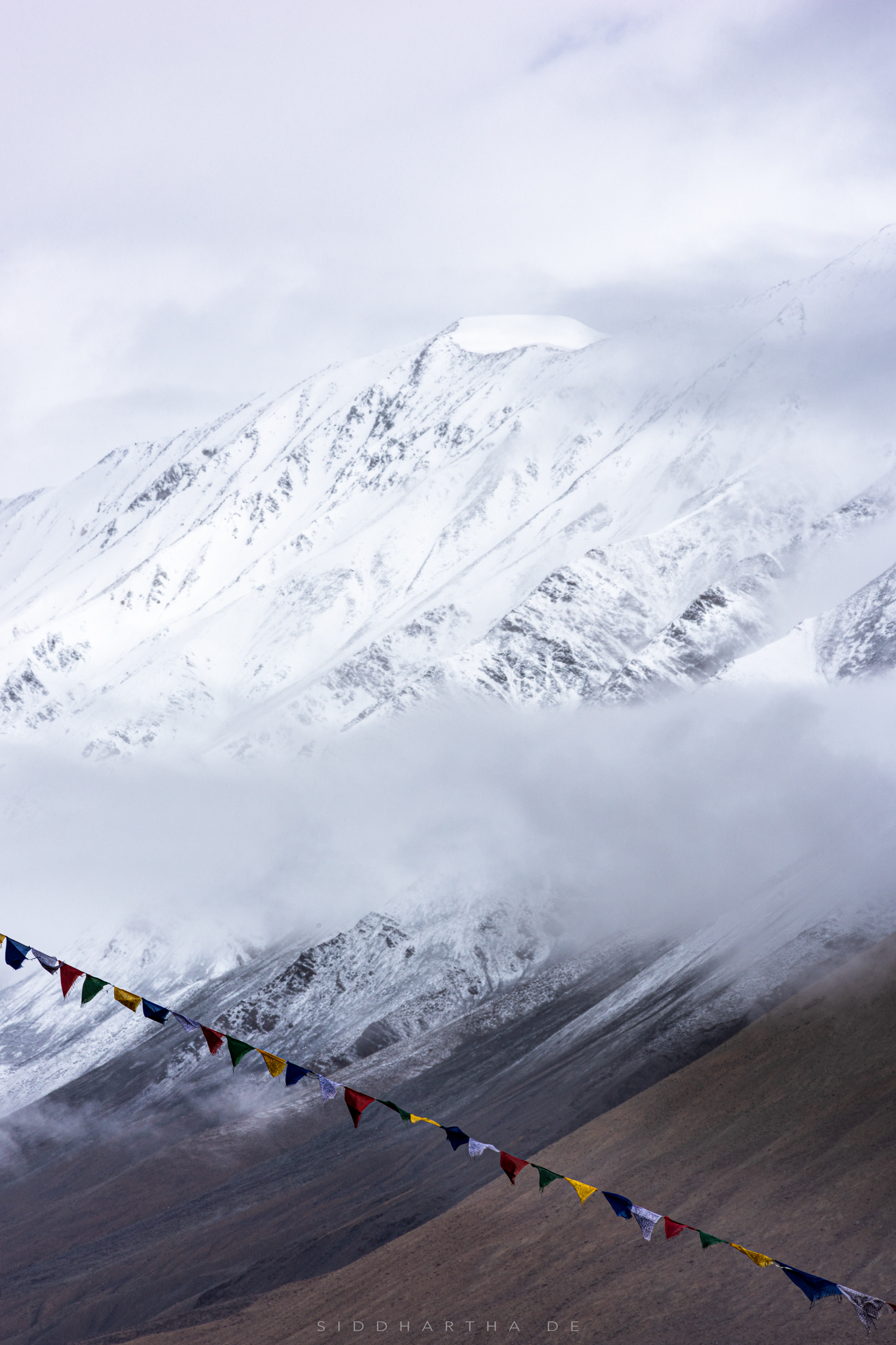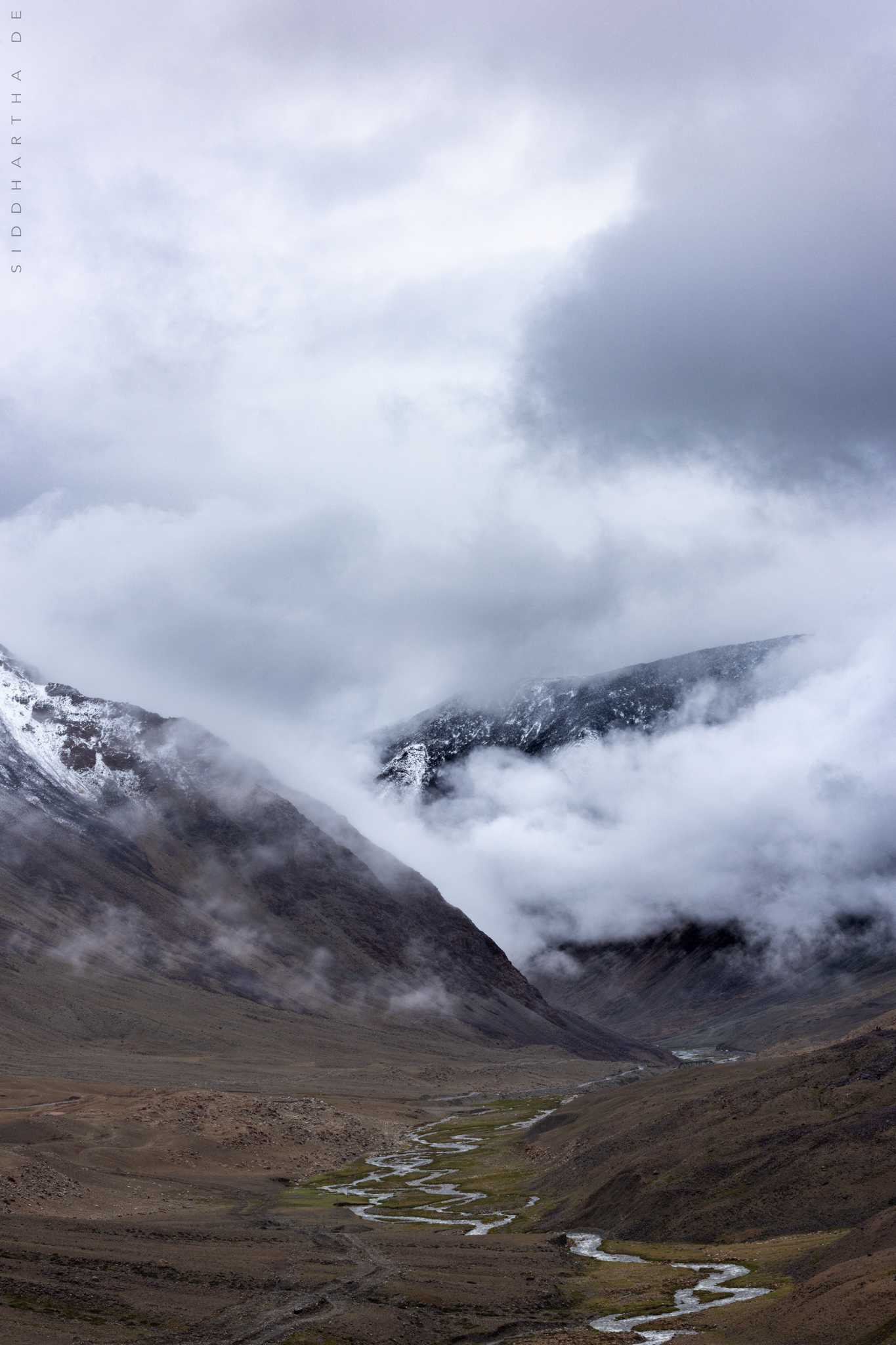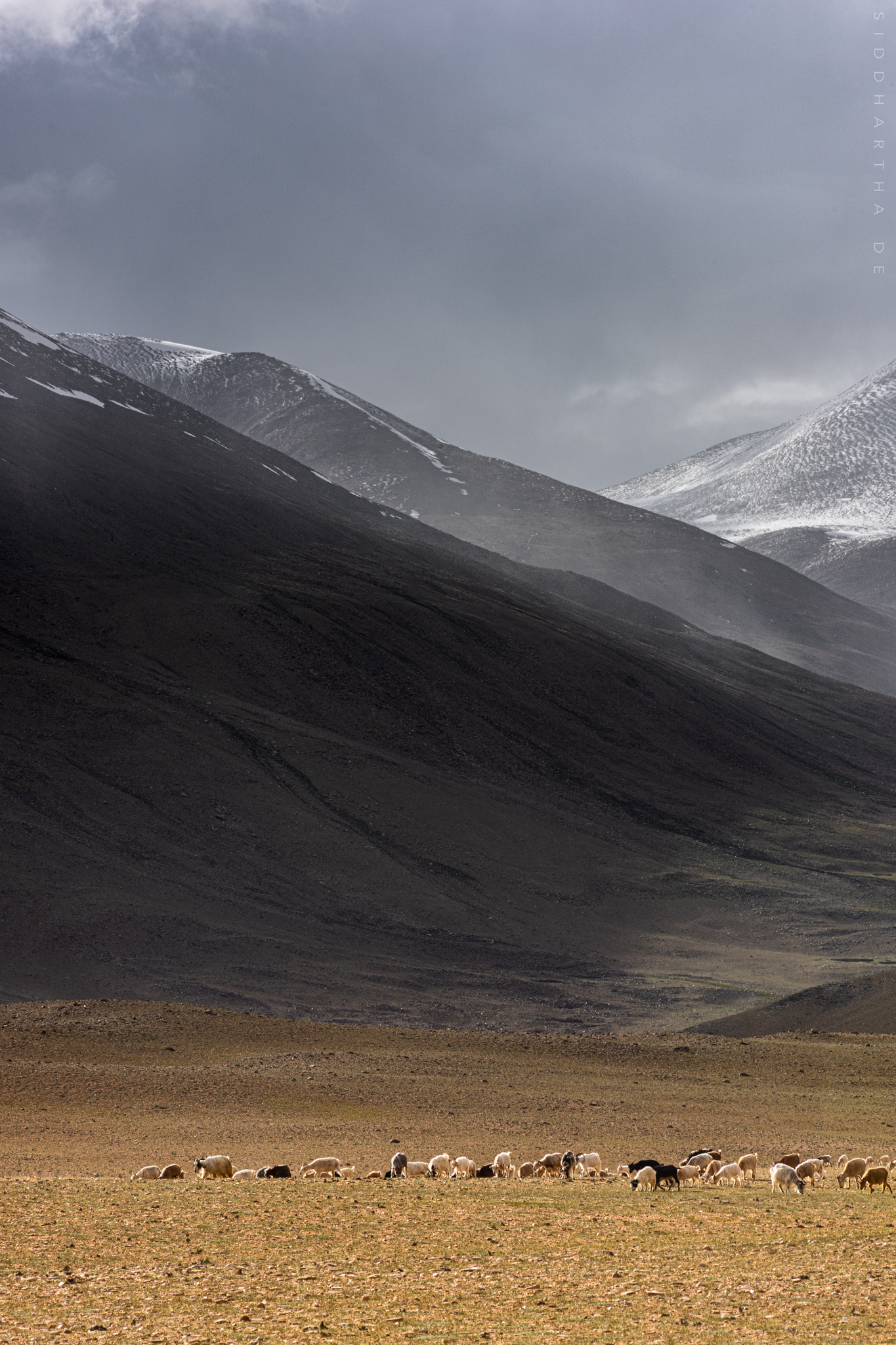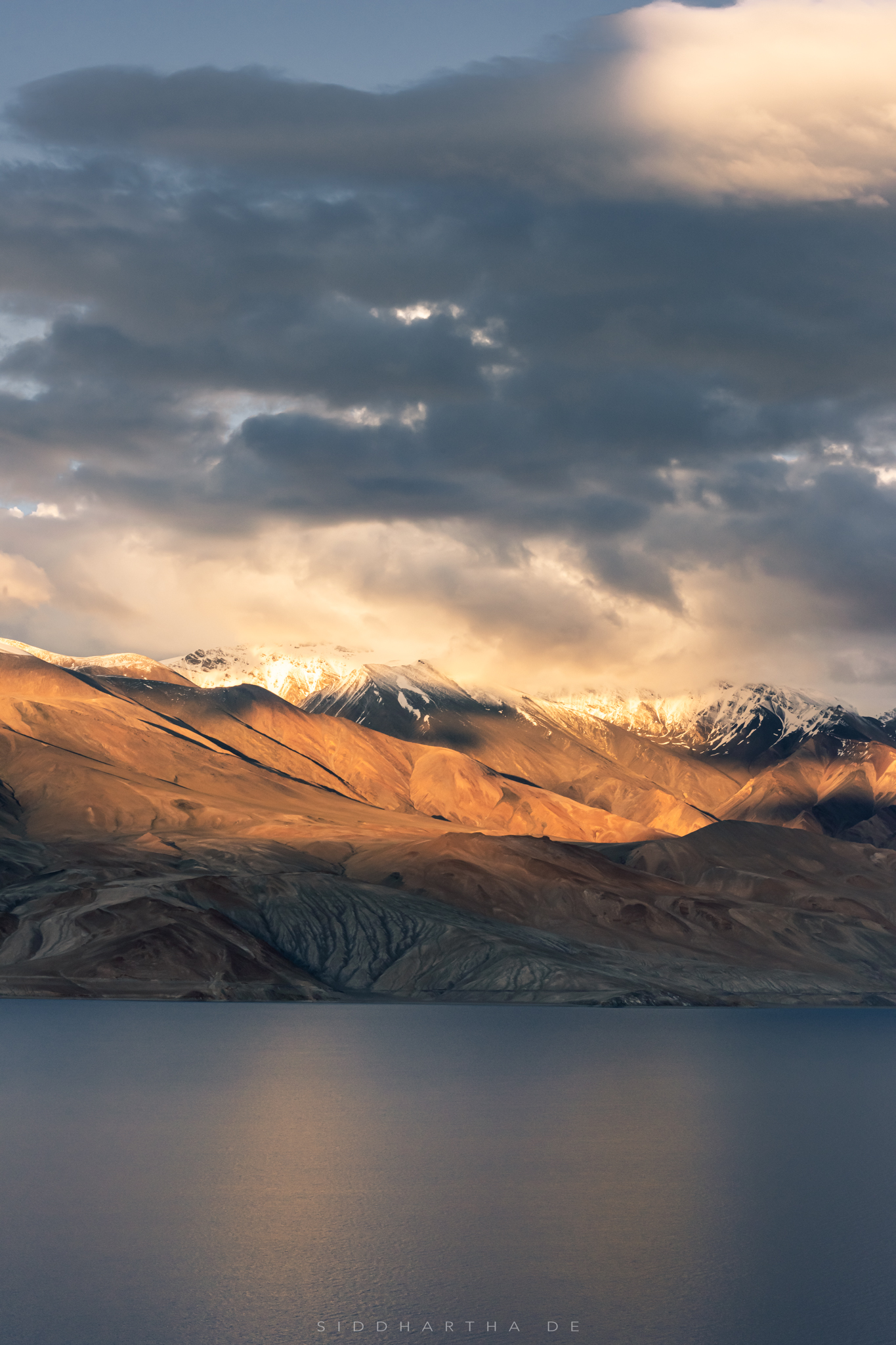Getting High, Getting Lehd (Part 2)
“Our battered suitcases were piled on the sidewalk again; we had longer ways to go. But no matter, the road is life.”
Continued from Part 1.
Ali loads the car. It’s a bright, sunny morning in Nubra and we’re off to Pangong Tso, that high mountain lake shared by India and Tibet, largely unknown, unvisited and unexplored until Bollywood and The 3 Idiots put it on the itinerary of every traveller to Ladakh a few years ago. Oh, well. So much for tranquility and solitude. But first we have to negotiate several more hours of treacherous mountain roads.
This is frontier country. High mountain passes, army convoys, border police patrols and lookout posts. China lies just over the nearest peaks. But we also pass beautiful mountain streams, tiny villages and shepherds tending their Pashmina goats. Prayer flags flutter ubiquitously all along the road, with the entire teachings of the Buddha believed to be condensed into in the mantra Om Mani Padme Hum inscribed on them. The rugged and arid landscape is a little unsettling, though. In many places the road is just rubble, we’re barely crawling along, there’s hardly any greenery anywhere, and it’s incredible just to see life clinging on in a place as inhospitable as this.
We stop along the way for sustenance – aloo parathas, Maggi noodles and steaming hot chai – at a roadside tapri. We’re climbing higher and it’s getting colder. Pangong Tso is at 14,300 feet, but we climb higher first before we descend towards the lake.
The rugged and arid landscape is a little unsettling, though. In many places the road is just rubble, we’re barely crawling along, there’s hardly any greenery anywhere, and it’s incredible just to see life clinging on in a place as inhospitable as this.
And then we see it! Just a tiny little sliver of it at first through a gap in the mountains, but that otherworldly shade of blue is unmistakeable. We’re a little worried about the weather. Clouds are rolling in and could ruin the sunset and astrophotography shoot planned for later in the evening and night. But we’ve come all this way so we’re just going to have to make the most of it. We’re staying in tents up the hillsides along the lake’s shore. The wind is biting, the accommodation is basic, and the water is numbingly cold. We’re standing at the edge of what must be the world’s highest and coldest desert oasis. The inviting blue and turquoise of the water is misleading, though. The lake is deep, cold, saline, frozen for six months of the year, and sustains no life.
The 3 Idiots theme is a bit overdone with the yellow scooters, drum baths and bum seats, but I suppose a place caters to the sort of tourist it gets. We drive over to a section of the lake with a beach and a sandbar from where we plan to photograph the sunset. But the weather has other ideas. It’s all grey and overcast. Still, it’s a beautiful place and we shoot until the light fades. There’s no question of a night shoot. There’s not a star to be seen and it looks like it’s going to start raining soon.
I spend a fitful night in a freezing tent. I’m up at 4:30 to shoot the sunrise but it’s raining outside. I feel a bit cheated. After having come all this way, after having thought about the pictures I wanted to take of the sunset, the Milky Way and the sunrise over the mountains surrounding the lake, this is a huge let-down. It isn’t possible to stay longer. We have a long way to go. To say I’m a bit disappointed is to put it mildly, but just like the rugged mountain scenery around me, I have to take the dips with every exhilarating high. We have another couple of mountain lakes to look forward to, so hopefully the weather will improve by the time we get there.
We leave after a quick breakfast. Our route takes us through breathtaking mountain scenery and over another high pass, the Chang-la, at 17,600 feet. The rain turns to snow as we climb upwards, and by the time we get to Chang-la, it’s a near white-out. July – high summer in the high Himalaya! We’re stuck in the snow for about an hour while an army convoy headed in the opposite direction slowly makes its way through. Ali drives on, playing Punjabi bhangra at full volume on the car stereo. Someone finally begs him to turn it off. He sheepishly tells us that he doesn’t understand Punjabi himself, but plays the music for the benefit of his passengers, most of whom are from Delhi and Chandigarh. The hotel is pure luxury after the frigid tent and basic amenities at Pangong and the bone-rattling drive. A long, hot shower and a sumptuous meal sets me right again, and I look forward to Tso Moriri the following day.
It’s another long drive south along the Indus and down towards the Tibetan border. Little villages and lakes dot the landscape along the road and we make a number of stops along the way to get a few shots. We finally get to Tso Moriri by late afternoon. This is probably the most beautiful of the Himalayan lakes, and at almost 15,000 feet, one of the highest. Not many people make the arduous trip out here, which is just as well. The clouds hold off just long enough for us to shoot a bit of the sunset. The wind chills us to the bone, and as the sun goes down it gets even colder and we beat a hasty retreat. Once again, we’re denied the Milky Way, and the following morning is overcast too.
Moriri is our last stop. It’s time to go home. Weather notwithstanding, it’s been a great trip. I saw some amazing places, I’ve made some good friends. We head back to Leh over Taglang-la (17,600 feet), a little worse for wear but richer for the experience. It’s funny how relative one’s idea of ‘normal’ is. When I arrived in Leh at the start of my trip, I had to acclimatise to its altitude and temperature, but after Pangong and Moriri, it feels like a balmy seaside resort.
During an earlier visit to Ladakh, I had said that it’s not a one-trip destination. It keeps drawing you back, and leaves you a different person each time you return home. It’s humbling to see the scale of these colossal mountains and realise how insignificant we really are. It’s humbling to see the hardship people in this part of the country deal with on a daily basis – the harsh weather, the unforgiving land, the altitude, the unrelenting cold – with a smile on their face. It’s humbling to see how something as trivial as a bar of chocolate makes a child’s day. It’s humbling to see the grace, politeness and dignity with which these gentle people of Ladakh lead their daily lives.
During an earlier visit to Ladakh, I had said that it’s not a one-trip destination. It keeps drawing you back, and leaves you a different person each time you return home.
Ladakh reminds me how fortunate I am, that there is so much beauty in this world, and that there is so much more of it I want to see. Ali drops me off at the airport the following morning and I tell him to do something about the weather the next time I’m here. With a smile he tells me it’s all in Allah’s hands.


